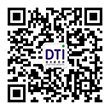EU EN71 testing and certification process for rubber toys
Date:2025-07-11 10:11:19 Classification
:【question】 Visits:
EN71 is the EU's mandatory safety standard for toys for children under 14 years old, covering physical, chemical, flame retardant and other safety requirements. Products that fail to pass the test will face market bans, recalls or fines.
1. Necessity of testing
Rubber toys exported to the EU must comply with the EN71 Toy Safety Directive (2009/48/EC), which requires all toys for children under 14 years old to pass physical, chemical and flame retardant performance tests, otherwise they cannot enter the EU market. Products that fail to pass the certification may face removal from the shelves, recalls or fines.
2. Core testing items
For the characteristics of rubber toys, the following three types of tests need to be focused on:
1. Physical and mechanical properties (EN71-1)
- Drop test, small parts test (anti-swallowing risk)
- Sharp edge/point test, tension test (such as joint parts)
- Torque test (to prevent parts from falling off)
2. Flame retardant performance (EN71-2)
- The burning speed of rubber materials must be ≤30mm/s (for surface fluff or textile coating)
3. Chemical migration (EN71-3)
- Rubber materials are subject to the third category limit (scrapable materials):
- Lead (Pb) ≤13.5mg/kg, cadmium (Cd) ≤1.3mg/kg
- Phthalates (DEHP/DBP, etc.) ≤0.1%
> If it contains a colored coating, it needs to be tested separately by color.
3. Certification process and cycle
1. Material preparation
- Provide product manual, bill of materials (BOM), sample drawing
- Fill in the test application form
2. Send samples
- 2-3 complete samples are required, including packaging and manuals
3. Laboratory testing
- Regular cycle: 5-7 working days (three basic tests)
- Expedited service: can be shortened to 3 days (additional fee required)
4. Report and compliance mark
- EN71 test report is issued after the test is passed
- CE mark is affixed to the product (EN71 belongs to the CE certification category)
4. Cost reference
- Basic package (EN71-1/2/3): ¥1000-2000 (depending on the complexity of the material)
5. Special precautions
1. Risk points of rubber materials
- Plasticizers (phthalates) are the main exceeding items, and supply chain chemical declarations are required
- Containing foamed rubber requires additional testing of flame retardants (such as TCEP ≤ 5ppm)
2. Label requirements
- Age warning label (such as "Not suitable for children under 3 years old")
- CE mark height must be ≥ 5mm, permanently and clearly attached
VI. Recommended operating steps
1. Pre-assessment of materials: Provide rubber formula to the laboratory for pre-examination to avoid repeated testing;
2. Select an institution: Prioritize laboratories with CNAS qualifications (such as Dezewei Testing);
3. Annual update: EN71 standards are often revised (such as the 2024 version of the stricter phthalate limit), and regular inspections are required.
> Tip: If the rubber toy contains food contact parts (such as teethers), it must additionally comply with EU EC 1935/2004 regulations.
For a complete list of EN71 limits and agency contact information, please refer to the original search results.




 Shen Gongwang Security: 44030602006947
Shen Gongwang Security: 44030602006947